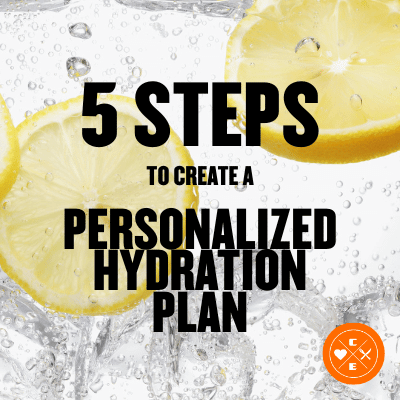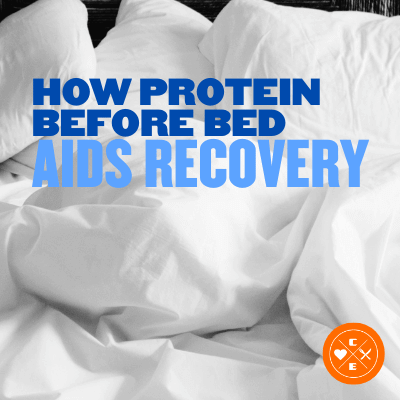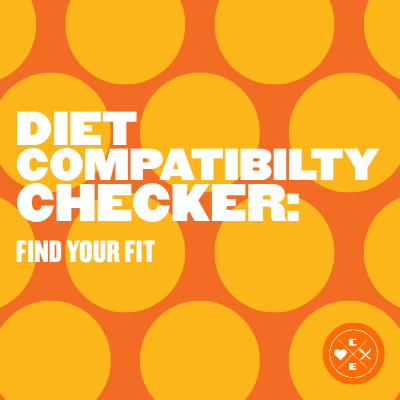5 Steps to Create a Personalized Hydration Plan

Jason Nista
Nutrition
09/19/2025 10:59am
20 minute read
5 Steps to Create a Personalized Hydration Plan
Staying hydrated isn’t one-size-fits-all. Your water and electrolyte needs depend on factors like activity level, sweat rate, and climate. A generic "8 glasses a day" approach won’t cut it for everyone - especially if you’re active or live in extreme conditions. Here’s how to create a hydration plan tailored to your body:
- Assess your hydration status: Use urine color, thirst levels, and body weight changes to check hydration.
- Measure your sweat rate: Weigh yourself before and after exercise to calculate fluid loss.
- Understand electrolyte needs: Replace sodium, potassium, and other minerals lost through sweat.
- Plan for workouts and recovery: Hydrate before, during, and after exercise with the right mix of fluids and electrolytes.
- Track and adjust: Monitor your performance and tweak your plan based on weather, activity, and health changes.
How Do I Create A Personalized Hydration Plan? - The Racket Xpert
![]()
Step 1: Check Your Current Hydration Levels
Before creating a hydration plan that suits your needs, it’s important to understand where you currently stand. Many people assume they’re drinking enough water, but often, that’s not the case. Your body provides clear signals about its hydration status - if you know what to look for.
Look for Physical Signs
Your body communicates its hydration needs through various physical cues. One of the most reliable indicators is the color of your urine. Ideally, well-hydrated urine should be pale yellow. If it’s dark yellow or amber, you’re likely dehydrated. On the flip side, clear urine might indicate overhydration, which can dilute essential electrolytes your body needs.
Check your urine at different times of the day. Morning urine may naturally be darker, but it shouldn’t be deep yellow or orange. Throughout the day, aim for that pale yellow shade as your standard.
Another key signal is thirst, but don’t rely on it as your only guide. By the time you feel thirsty, you’re already mildly dehydrated. In fact, thirst typically kicks in after you’ve lost about 2% of your body weight in fluids - a small amount that can still impact your energy and performance.
Other physical signs to watch for include dry mouth, fatigue, headaches, and dizziness. Even your skin can reveal hydration levels. Try this simple test: pinch the skin on the back of your hand and release it. If it takes more than a second or two to return to normal, you might need to drink more fluids.
Tracking changes in body weight is another useful tool. Weigh yourself before and after exercise. If you’ve lost more than 2% of your body weight, it’s a sign of significant fluid loss. For example, a 150-pound person losing 3 pounds after a workout is likely dehydrated.
Once you’ve identified these physical signs, you’ll be better equipped to assess your hydration status. Pair this knowledge with a record of your fluid intake for a complete picture.
Record Your Daily Fluid Intake
Many people underestimate how much (or how little) they’re drinking each day. Start by tracking everything - water, coffee, tea, juice, and even the water content in foods like soup or fruit. This will give you a clear baseline to work from.
You can use a notebook, your phone’s notes app, or a water-tracking app to log your intake. Be specific - record the time, type of beverage, and the amount. For reference, a typical water bottle holds about 16.9 fluid ounces, while a standard coffee mug is around 8 fluid ounces. Familiarizing yourself with these measurements will improve accuracy.
Track your intake for at least three to five days to get a realistic view of your habits. Include a mix of days - workdays, weekends, exercise days, and rest days. Patterns will start to emerge. Maybe you drink plenty of water at the office but forget to hydrate on weekends. Or perhaps you’re consistent in the morning but slack off in the afternoon.
Pay attention to what you’re drinking as well. Plain water is the best choice, but other beverages contribute to hydration too. Coffee and tea, while mildly diuretic, still count. However, sugary drinks and alcohol can work against your hydration efforts, so note them carefully.
As you track, also record any changes in how you feel - such as energy levels or symptoms like headaches. Over a few days, you might realize you’re drinking more than you thought, or you might find you’re falling short most days. Either way, this data will help you build a hydration plan tailored to your needs.
Step 2: Measure Your Sweat Rate
Understanding your sweat rate is key to managing fluid loss and tailoring your hydration before, during, and after exercise. Sweat rate reveals how much fluid you lose, helping you figure out exactly how much to drink to stay balanced. Dr. Daniel Vigil, Associate Clinical Professor at the David Geffen School of Medicine and Team Physician at UCLA, highlights the importance of this balance, advising that we should aim to "replace our sweat losses without over-replacing them".
Sweat rates vary widely. On average, a healthy, average-sized person loses about 500 mL of sweat per hour. However, this can range from 0.5 to 2.0 liters per hour during exercise, and in extreme cases, some people may lose as much as 3.7 liters per hour. Testing your own sweat rate takes the mystery out of hydration and ensures you're meeting your body's specific needs.
How to Test Your Sweat Rate
To measure your sweat rate, you’ll need a bathroom scale, a dry towel, and a way to track how much fluid you drink during your workout. The test involves weighing yourself before and after exercise to calculate how much sweat you’ve lost.
- Weigh yourself before your workout: Make sure to weigh yourself without clothes and after emptying your bladder. This gives you a precise starting weight.
- Exercise for one hour: Choose an activity and intensity that matches your usual routine. For instance, if you’re training for a marathon, run at your race pace.
- Weigh yourself again: After your workout, dry off completely and weigh yourself nude once more.
Subtract your post-exercise weight from your pre-exercise weight to find your sweat loss. To convert this into milliliters, note that a loss of 1.1 pounds (about 0.5 kg) equals roughly 500 mL of sweat. If you drank fluids during your workout, add that amount to your total weight loss to get a clearer picture of your overall sweat loss.
It’s important to know that losing more than 2% of your body weight through sweat can negatively impact athletic performance. For example, a 150-pound person losing just 3 pounds of fluid may notice a drop in performance.
Factor in Weather Conditions
Sweat rate isn’t constant - it changes depending on the environment. Dr. Vigil explains, "Your fitness, the type of exercise you're doing, the temperature outside, and the humidity all affect sweat rate".
- Temperature: As it gets hotter, sweat rates increase. For instance, at 87°F, the average rate might be 0.4 L/h, but at 98°F, it can jump to 2.2 L/h.
- Humidity: When the air is humid, sweat evaporates less efficiently, potentially increasing your sweat rate by 20–30%.
- Airflow: A breeze or fan can improve evaporation, reducing sweat rate by about 20%.
To fine-tune your hydration strategy, perform sweat rate tests in different weather conditions. Test on moderate days, during hot and dry weather, and in hot and humid environments. If you work out indoors, try testing with and without fans or air conditioning to see how these factors influence your sweat rate.
During each test, keep track of any fluids you drink, food you eat, and bathroom breaks, as these can affect your weight measurements and overall results. By gathering data in various conditions, you’ll have a clearer understanding of how to stay properly hydrated no matter the setting.
Step 3: Figure Out Your Electrolyte Needs
To keep your body performing at its best, you need to understand how much you're sweating and how many electrolytes you're losing. Sweat doesn't just cool you down - it also drains your body of essential minerals. Knowing your electrolyte needs helps you replace what’s lost and keeps everything running smoothly during exercise.
Why Electrolytes Matter
Electrolytes like sodium, chloride, potassium, magnesium, and calcium are critical for maintaining fluid balance, muscle function, and nerve signaling. When these minerals aren’t replenished, you might deal with muscle cramps, fatigue, or even serious conditions like hyponatremia.
How much you lose depends on factors like your sweat rate, workout intensity, weather, and even your genetics. On average, per liter of sweat, you lose:
- Sodium: 460–1,840 mg
- Chloride: 710–2,840 mg
- Potassium: 160–390 mg
- Magnesium and Calcium: Minimal amounts
For example, if you’re sweating 1.5 liters per hour, that’s between 690–2,760 mg of sodium lost in just one hour. Over a long workout, those numbers add up quickly, making it crucial to replace these minerals.
Replacing Lost Electrolytes
Start by calculating your electrolyte losses. Multiply your hourly sweat rate by typical electrolyte concentrations. For example, if you sweat 1.2 liters per hour and lose an average of 1,150 mg of sodium per liter, you’re losing about 1,380 mg of sodium per hour. For the most accurate results, consider a sweat test to measure your personal sodium loss.
"If you've also had a sweat test (to find out your sweat sodium concentration - i.e. how much sodium you lose in your sweat - you can add that data in and it will estimate your hourly and total sodium loss numbers too." – Andy Blow, Founder of Precision Hydration
Here’s how to replace electrolytes based on workout duration:
- 20–60 minutes: Stick to fluids.
- 1–2 hours: Use an electrolyte-carbohydrate drink.
- Over 2 hours: Pair water with salty, carb-rich snacks or drinks.
You can also replenish electrolytes through food. For sodium, try salty snacks like nuts or pretzels. For potassium, go for bananas, oranges, or potatoes. Leafy greens, nuts, and seeds are great for magnesium, while dairy products or fortified alternatives help with calcium.
One important tip: don’t aim to replace all your fluid losses. Instead, target about 75–80% to avoid the risk of hyponatremia. Use these strategies to create a hydration plan that works for your body and your workouts.
sbb-itb-1989a25
Step 4: Build Your Custom Hydration Plan
Using the sweat rate and electrolyte data you gathered in Steps 2 and 3, you can now create a hydration plan tailored to your workouts and environmental conditions. Let’s break down how to apply these insights before, during, and after exercise.
Hydration Before, During, and After Exercise
Before exercise, proper hydration sets the stage for peak performance. Start hydrating 2-4 hours before your workout, aiming for 16-20 fl oz of water during this period. Then, about 15-20 minutes before starting, drink another 8-10 fl oz. This gives your body a chance to absorb the fluids and eliminate any excess.
A quick check of your urine color can confirm hydration - pale yellow is ideal, while darker shades suggest you need more fluids. If you’re gearing up for intense exercise lasting over an hour, consider adding 200-300 mg of sodium per 16 fl oz to your pre-exercise drink.
During exercise, focus on replacing about 75-80% of the fluids you lose. This helps maintain performance while avoiding the risks of overhydration, like hyponatremia. Based on your sweat rate, aim to drink 6-8 fl oz every 15-20 minutes. For instance, if your sweat rate is 24 fl oz/hour, you’d need around 18-20 fl oz during your session.
For workouts longer than an hour, add 300-600 mg of sodium per hour to your hydration routine to replenish electrolytes. Sports drinks are a convenient option, but you can also use electrolyte tablets or powders mixed with water.
After exercise, it’s time to replenish both fluids and electrolytes. Weigh yourself before and after your workout - drink 16-24 fl oz of fluid for every pound lost. To help your body retain these fluids, include 300-500 mg of sodium per 16 fl oz in your recovery drinks.
Adjusting for Weather and Climate
Environmental factors like temperature, humidity, and altitude can significantly impact your hydration needs, so it’s important to adapt your plan accordingly.
In hot weather - especially when temperatures exceed 80°F - fluid losses can increase by 50-100%. Start hydrating earlier and boost your intake during exercise by 25-50% (or an additional 4-8 fl oz/hour).
In cold weather, you may not feel as thirsty, but you’re still losing fluids through sweat and breathing. Cold air holds less moisture, which means every exhale depletes water from your body. Stick to your hydration schedule even if you’re not thirsty, and consider warm drinks to make it easier to stay on track.
At altitudes above 8,000 feet, your body works harder due to increased breathing rates and higher urine production. This means you’ll need more fluids - add an extra 16-24 fl oz per day to your baseline intake. Keep a close eye on your urine color, as dehydration at altitude can mimic symptoms of altitude sickness.
Seasonal changes also call for adjustments. In summer, focus on cooling strategies and higher sodium intake. In winter, prioritize staying hydrated despite a reduced thirst sensation. Spring and fall may bring milder conditions, but daily weather variations still require attention.
Keep track of how different conditions affect your performance. Take notes on your fluid intake, the weather, and how you felt during and after exercise. Over time, this data will help you fine-tune your plan, ensuring you’re prepared for any environment or activity.
Step 5: Track and Adjust Your Hydration Plan
Your hydration plan isn’t a one-and-done deal - it needs constant tweaking as your activities, environment, and even your body change. By using the insights you gained in Steps 1 through 4, you can fine-tune your approach to staying hydrated.
Monitor Your Body and Performance
Once you’ve set your baseline hydration needs, keep an eye on these key signals to ensure you’re staying on track:
- Urine Color: A pale yellow shade is a good sign that you’re well-hydrated, while darker urine means you likely need more fluids. Make it a habit to check this regularly for quick feedback.
- Physical Performance: If you’re taking longer to recover after workouts or feeling unusually tired, dehydration could be the culprit.
- Muscle Cramps: Frequent cramps or spasms during exercise might point to an electrolyte imbalance caused by dehydration.
- Cognitive Function: Trouble focusing, memory lapses, or that dreaded brain fog can be signs that your hydration levels need attention. Persistent headaches or migraines may also indicate reduced blood volume and oxygen flow to the brain.
- Mouth and Skin: A dry or sticky feeling in your mouth from reduced saliva is another red flag. Similarly, if your skin lacks elasticity - like when you pinch the skin on the back of your hand and it takes a while to snap back - you might need to up your fluid intake.
- Sweat Production: If you stop sweating during intense physical activity when you normally would, it could mean dehydration is setting in. This can also increase your risk of heat exhaustion.
Dr. Robert Lichfield from Providence Urgent Care offers a simple but crucial reminder:
"As soon as you are thirsty, drink water!"
By the time thirst kicks in, you’re likely already in the early stages of dehydration.
Update Your Plan Regularly
Your hydration needs aren’t static - they shift with changes in exercise intensity, weather, and overall health. Use the cues listed above, like urine color, recovery time, and cognitive clarity, to reassess and adjust your hydration plan as needed. This might mean increasing your water or electrolyte intake to match a more demanding workout or hot day.
And if you experience major changes in your health or activity levels, don’t hesitate to consult a healthcare professional for guidance. Staying proactive about hydration is key to keeping your body and mind performing at their best.
Adding Balanced Nutrition for Better Hydration
Pairing a personalized hydration plan with balanced nutrition can amplify your recovery and performance. While drinking enough fluids is crucial, the right nutrients and electrolytes play a key role in helping your body retain fluids and recover effectively. By combining a thoughtful hydration strategy with nutrient-rich meals, you can fuel your body for sustained energy, quicker recovery, and better overall performance.
Meal Options That Support Hydration
Carbohydrates, proteins, and healthy fats are essential for both hydration and recovery. After exercise, your body is especially receptive to replenishment. Within 15-60 minutes, snacks combining carbs and protein - like chocolate milk, yogurt with granola, smoothies, cheese and crackers, or protein bars - can help jumpstart recovery by restoring energy and aiding muscle repair.
A more substantial meal 2-3 hours post-exercise is equally important. Options such as a hamburger with grilled vegetables, salmon with rice and mixed veggies, or even pizza paired with a side salad provide the nutrients your body needs to fully recover while supporting hydration.
For convenience, Clean Eatz Kitchen offers customizable meal plans tailored to recovery and hydration. Their rotating monthly menu caters to various goals, from portion-controlled meals under 600 calories for weight loss to high-protein options for muscle building, starting at $59.95. These chef-prepared, frozen meals ensure consistent, balanced nutrition that complements your hydration efforts. Meals are designed with the right mix of carbs for energy, protein for muscle repair, and healthy fats for sustained energy - all working together to enhance your recovery and performance.
Hydration can also benefit from water-rich ingredients found in many whole foods. Fruits like berries, melons, oranges, and grapes, along with vegetables like carrots and lettuce, contribute to your daily fluid intake. For example, cucumbers (96% water) and watermelon (92% water, plus potassium) are excellent choices for staying hydrated.
Electrolyte-rich foods are another critical component. Avocados, for instance, pack more potassium than bananas, while a medium baked potato with the skin delivers a whopping 926 milligrams of potassium - more than double that of a banana. Sardines are also a nutrient powerhouse, offering phosphorus, potassium, calcium, sodium, and magnesium in a compact serving.
Easy Meals for Busy Schedules
A hectic lifestyle doesn’t have to derail your nutrition. Clean Eatz Kitchen’s ready-to-eat meals take the guesswork out of meal prep. These microwave-ready meals, available without a subscription, make it easy to maintain balanced nutrition even during busy periods.
The Build Your Meal Plan option, priced at $53.95, lets you tailor meals to your taste and hydration needs. With nutrient-dense options that complement your hydration strategy, you can stay on track without the hassle of planning, shopping, or cooking. This flexibility is especially helpful during demanding training schedules or high-pressure workdays when nutrition often takes a backseat.
For those who like to stock up, Clean Eatz Kitchen offers bulk options like the Clean Box A, starting at $205.00 for 30 meals. This ensures you always have balanced, hydration-supporting meals on hand. Plus, with nationwide delivery, you can maintain your nutrition goals no matter where you are - whether traveling for work, training in a different climate, or juggling a packed schedule. These convenient, pre-portioned meals make it easier to stick to both your hydration and nutrition plans, ensuring consistent support for your recovery and performance.
Conclusion: Start Building Your Custom Hydration Plan Today
Building a hydration plan tailored to your needs isn’t just about drinking more water - it’s about understanding your body and creating a strategy that works for you. Follow these five steps to get started: assess your current hydration status, measure your sweat rate, determine your electrolyte needs, create a plan that fits your lifestyle, and track and adjust as you go.
Hydration is personal. Factors like how active you are, how much you sweat, the climate you live in, and your daily routine all play a role in determining how much fluid your body requires. Taking the time to figure out these details can lead to improved performance, quicker recovery, and better overall health.
Pairing hydration with proper nutrition is key. The right foods can enhance your body’s ability to stay hydrated and maintain electrolyte balance. Think water-rich fruits and vegetables, electrolyte-packed snacks, and balanced meals - these all contribute to keeping you properly fueled and hydrated.
For those with busy schedules, simple solutions can make a big difference. Clean Eatz Kitchen offers customizable, portion-controlled meals starting at $49.99 for weight-loss options or $59.95 for high-protein plans. These microwave-ready meals take the guesswork out of meal prep, ensuring you get the nutrients you need to complement your hydration plan without the hassle.
Start today by checking your current hydration levels and working through the steps one at a time. Progress doesn’t happen overnight, but with consistent effort and adjustments based on your body’s needs, your hydration plan will grow stronger over time.
Track your progress, tweak your plan as needed, and watch as it enhances your performance, recovery, and overall wellness. Whether you’re an athlete or just aiming for better daily health, a personalized hydration strategy can be a game-changer for your well-being.
FAQs
How do I figure out my sweat rate, and why is it important for staying hydrated?
To figure out your sweat rate, start by weighing yourself before and after exercising while wearing minimal clothing. Make sure to note how long your workout lasted. Take your pre-exercise weight, subtract your post-exercise weight, and then add the amount of fluid you consumed during the activity. If you needed to use the bathroom, subtract any urine output from this total. The result will show your total fluid loss per hour.
Knowing your sweat rate is key to tailoring a hydration plan that works for you. It ensures you replace the fluids you lose during exercise, helping to prevent dehydration, combat fatigue, avoid heat-related problems, and boost both your performance and recovery.
What are the risks of drinking too much water, and how can I stay properly hydrated?
Drinking excessive amounts of water can result in overhydration, which might lead to a serious condition known as hyponatremia. This occurs when the sodium levels in your blood become too diluted, potentially causing symptoms such as confusion, nausea, headaches, and, in extreme cases, seizures or even coma.
To keep your hydration levels in check and avoid overhydration, pay attention to your body's natural thirst cues and sip fluids steadily throughout the day. It's helpful to drink smaller amounts more frequently, particularly during exercise or in hot weather. If you have medical conditions like kidney disease or heart failure, it's important to consult your doctor about a safe water intake for your situation. Staying aware of your hydration needs ensures you maintain a healthy balance without going overboard.
How do hot and humid weather conditions affect hydration, and how can I adjust my hydration plan?
Hot and sticky weather can push your body to lose fluids faster than usual. When the temperature soars and humidity rises, your body sweats more, but sweat doesn’t evaporate as quickly in humid conditions. This makes it harder for your body to cool down and can lead to dehydration more quickly.
To stay ahead of this, try drinking 2-3 cups of water about 2-3 hours before heading outdoors. Once you're active in the heat, sip small amounts of water every 15-20 minutes to keep your hydration steady. Including electrolytes, like sodium, can also help replenish the salts you lose through sweat, keeping your body balanced and ready to take on the heat.
Related Articles
10 Best Allergy-Friendly Meal Delivery Services
19 minute read
How Protein Before Bed Aids Recovery
12 minute read
Diet Compatibility Checker: Find Your Fit
3 minute read



